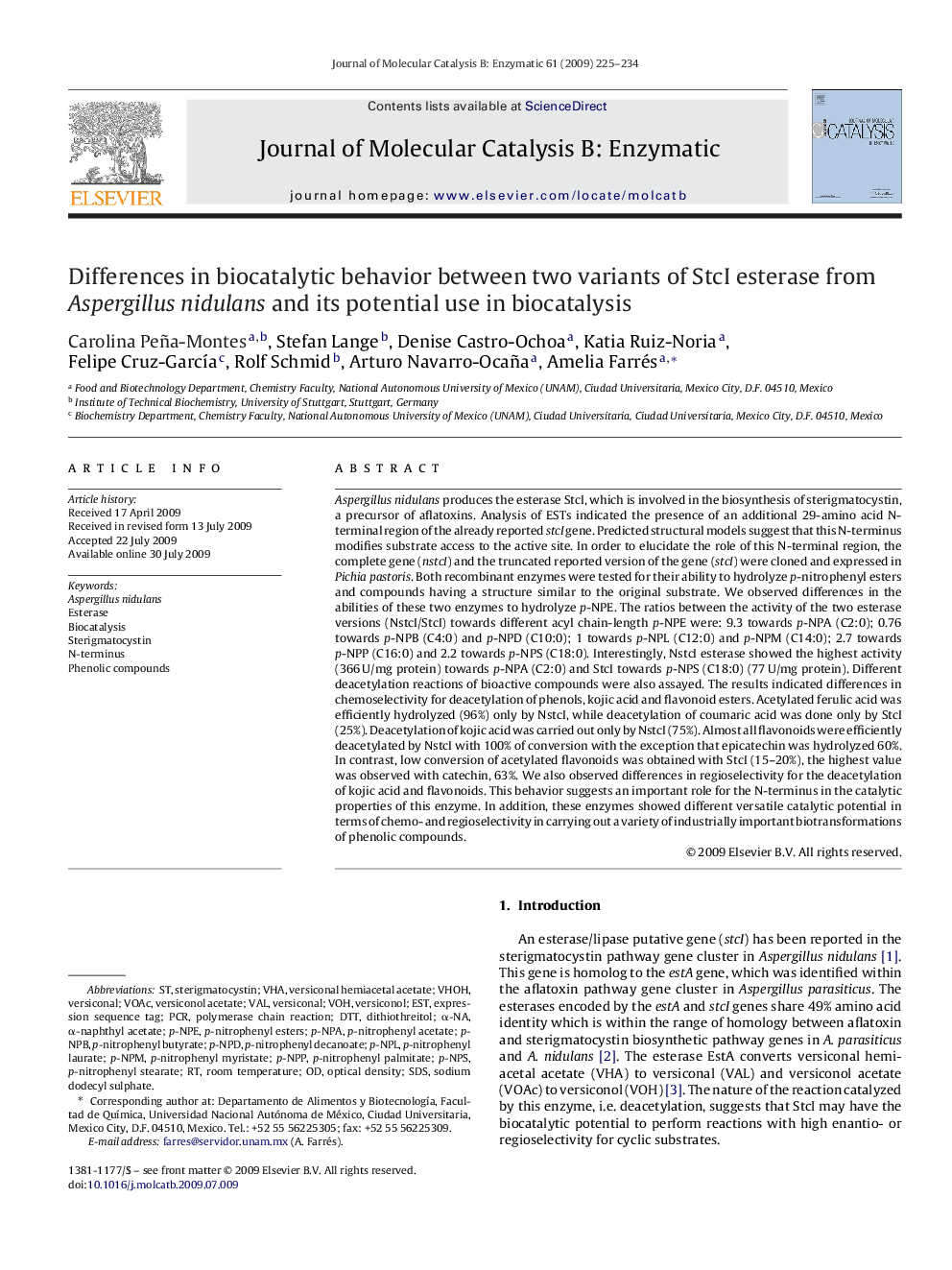| کد مقاله | کد نشریه | سال انتشار | مقاله انگلیسی | نسخه تمام متن |
|---|---|---|---|---|
| 70550 | 48837 | 2009 | 10 صفحه PDF | دانلود رایگان |

Aspergillus nidulans produces the esterase StcI, which is involved in the biosynthesis of sterigmatocystin, a precursor of aflatoxins. Analysis of ESTs indicated the presence of an additional 29-amino acid N-terminal region of the already reported stcI gene. Predicted structural models suggest that this N-terminus modifies substrate access to the active site. In order to elucidate the role of this N-terminal region, the complete gene (nstcI) and the truncated reported version of the gene (stcI) were cloned and expressed in Pichia pastoris. Both recombinant enzymes were tested for their ability to hydrolyze p-nitrophenyl esters and compounds having a structure similar to the original substrate. We observed differences in the abilities of these two enzymes to hydrolyze p-NPE. The ratios between the activity of the two esterase versions (NstcI/StcI) towards different acyl chain-length p-NPE were: 9.3 towards p-NPA (C2:0); 0.76 towards p-NPB (C4:0) and p-NPD (C10:0); 1 towards p-NPL (C12:0) and p-NPM (C14:0); 2.7 towards p-NPP (C16:0) and 2.2 towards p-NPS (C18:0). Interestingly, NstcI esterase showed the highest activity (366 U/mg protein) towards p-NPA (C2:0) and StcI towards p-NPS (C18:0) (77 U/mg protein). Different deacetylation reactions of bioactive compounds were also assayed. The results indicated differences in chemoselectivity for deacetylation of phenols, kojic acid and flavonoid esters. Acetylated ferulic acid was efficiently hydrolyzed (96%) only by NstcI, while deacetylation of coumaric acid was done only by StcI (25%). Deacetylation of kojic acid was carried out only by NstcI (75%). Almost all flavonoids were efficiently deacetylated by NstcI with 100% of conversion with the exception that epicatechin was hydrolyzed 60%. In contrast, low conversion of acetylated flavonoids was obtained with StcI (15–20%), the highest value was observed with catechin, 63%. We also observed differences in regioselectivity for the deacetylation of kojic acid and flavonoids. This behavior suggests an important role for the N-terminus in the catalytic properties of this enzyme. In addition, these enzymes showed different versatile catalytic potential in terms of chemo- and regioselectivity in carrying out a variety of industrially important biotransformations of phenolic compounds.
Journal: Journal of Molecular Catalysis B: Enzymatic - Volume 61, Issues 3–4, December 2009, Pages 225–234